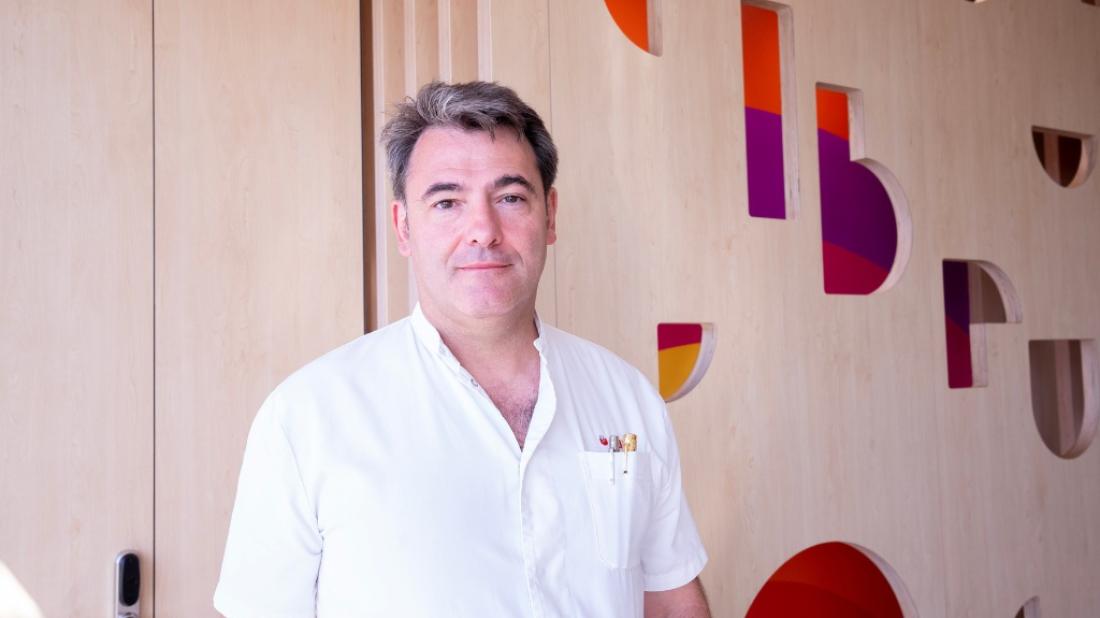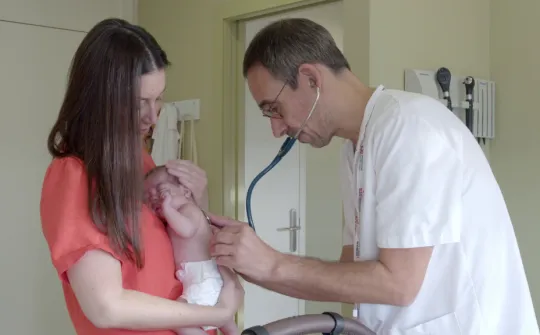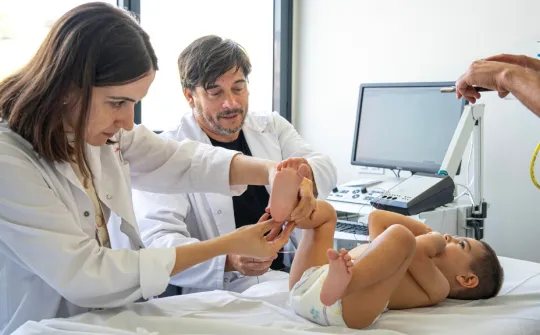"Our team can provide care for patients with congenital cardiopathies from birth right up to adulthood"

Dr Stefano Congiu, Head of the Heart Surgery Department at the SJD Barcelona Children's Hospital explains how the most complex cases of cardiopathy are treated at the facility.
Six years ago Stefano Congiu joined the Heart Unit at the SJD Barcelona Children's Hospital after having previously worked as a pediatric heart surgeon at the Leeds General Infirmary in England for ten years. There, he also filled an academic role, teaching future doctors and surgeons at the hospital and also at the University of Leeds.
His time at the British hospital allowed him to gain a vast wealth of experience in the field of congenital cardiopathy surgery, performing over 3,000 operations. However, returning to Barcelona was like ‘coming home’, as Dr Congiu trained as an adult heart surgeon at Hospital Clínic, and then joined the SJD Barcelona Children's Hospital to learn about pediatric forms of cardiac disease.
How was your experience in Leeds different to now at the SJD?
In Leeds we carried out a large volume of procedures. Here the volume is much less, but being a reference centre for various complex surgical pathologies, we carry out procedures that are done in very few hospitals around the world, and with excellent results, comparable to the best international hospitals.
What new types of procedures are done?
We are a reference centre in treating patients with hypoplastic left heart syndrome, for example. The initial operation that these patients need to survive is known as the Norwood procedure, which is an extremely complex procedure. We are seeing excellent results, however. Plus, we have launched the surgical programme to treat patients with the Ebstein anomaly.
With this disease, patients have a significant structural abnormality in the tricuspid valve and the right ventricle, causing severe changes in the structure and function of the heart. The general trend was to avoid operating on these patients, as results were not satisfactory. However, with time, a new surgical technique has been developed that can be used to treat them. The procedure is known as the cone method, which we are conducting at the SJD Barcelona Children's Hospital with excellent results.
The hospital has recently partnered with Hospital Clínic to offer continued care to children born with a heart condition. What do you make of this alliance?
This collaboration, which has resulted in the Congenital Cardiopathy Centre Barcelona, allows us to consolidate our professional team and offer patients with congenital heart conditions care from birth right up to adulthood. Plus, it allows us to apply surgical techniques traditionally used on adult patients to our pediatric patients, such as robot-assisted surgery, an excellent option for certain patient profiles.
At present, the technique is available to a limited number of cases, based on the physical size of the patient. Generally speaking, we perform this technique on adolescent patients. However, for patients who are not suitable candidates for robot-assisted surgery, we have minimally invasive procedures that also take esthetic aspects into consideration.
"We carry out procedures that are done in very few hospitals around the world, and with excellent results, comparable to the best international hospitals"
Is there anything else you would like to mention?
One of the programmes we have made the most progress in is the valve repair programme. The approach we take at SJD is to repair instead of replace, wherever possible. On a global scale, there is a wealth of experience in mitral valve repair, with well established techniques. However, aortic valve repair is more complex. The Ross procedure is considered the standard technique for aortic valve replacement in the pediatric population, but it is a very complicated operation that is definitely not risk or complication free. The pulmonary valve is used in place of the aortic valve, but this means that the pulmonary valve then needs to be replaced.
In response to this issue, ideas for other methods of aortic valve replacement in pediatric patients have been put forward. One of them is the Ozaki procedure. It is a relatively new procedure that uses the patient's pericardial tissue to create new valve leaflets at the exact specifications that the patient needs. We have already completed five operations using this technique, with excellent results.
As well as increasing patient survival rates, heart surgeons also try to mitigate the side effects of heart conditions. How do they do that?
Each phase of a heart operation is important: before, during and after. However, we have recently been focusing on neuromonitoring of our patients, especially neonates. We use sensors that detect oxygen levels in the brain. In fact, we are part of an important study led by Dr Marta Camprubí, in which we are continuously and simultaneously recording both EEG brain activity and oxygenation. The aim is to eventually implement changes that can increase brain protection during surgical procedures.
For example, during certain operations, in very unique cases, we have to modify blood flow to certain parts of the body. Continuous monitoring of these regions will allow us to keep an eye on the condition of these tissues during this phase of surgery.
Luckily, we have a multidisciplinary team who are able to carry out these procedures and create new protocols to safeguard the wellbeing of our patients. We count on the collaboration of Dr Jana Climent of the Neurophysiology team, who has helped us to optimise continuous monitoring of certain at-risk structures during surgical procedures.
For example, we monitor the activity of the recurrent laryngeal nerve, which controls the vocal cords, or the phrenic nerve, which controls the diaphragm. In this way, we reduce unexpected lesions to these structures during complex operations.
Can a heart operation cause damage to the vocal cords?
Yes. Several nerves are found near the vascular structures in the mediastinum, an area of the chest, among which is the recurrent laryngeal nerve. There are two nerves, one for each vocal cord. However, the left nerve is the most frequently affected during aortic arch operations, for example. That is why we have placed a great deal of emphasis on developing a neuromonitoring strategy for these structures, to avoid damaging them during operations.



